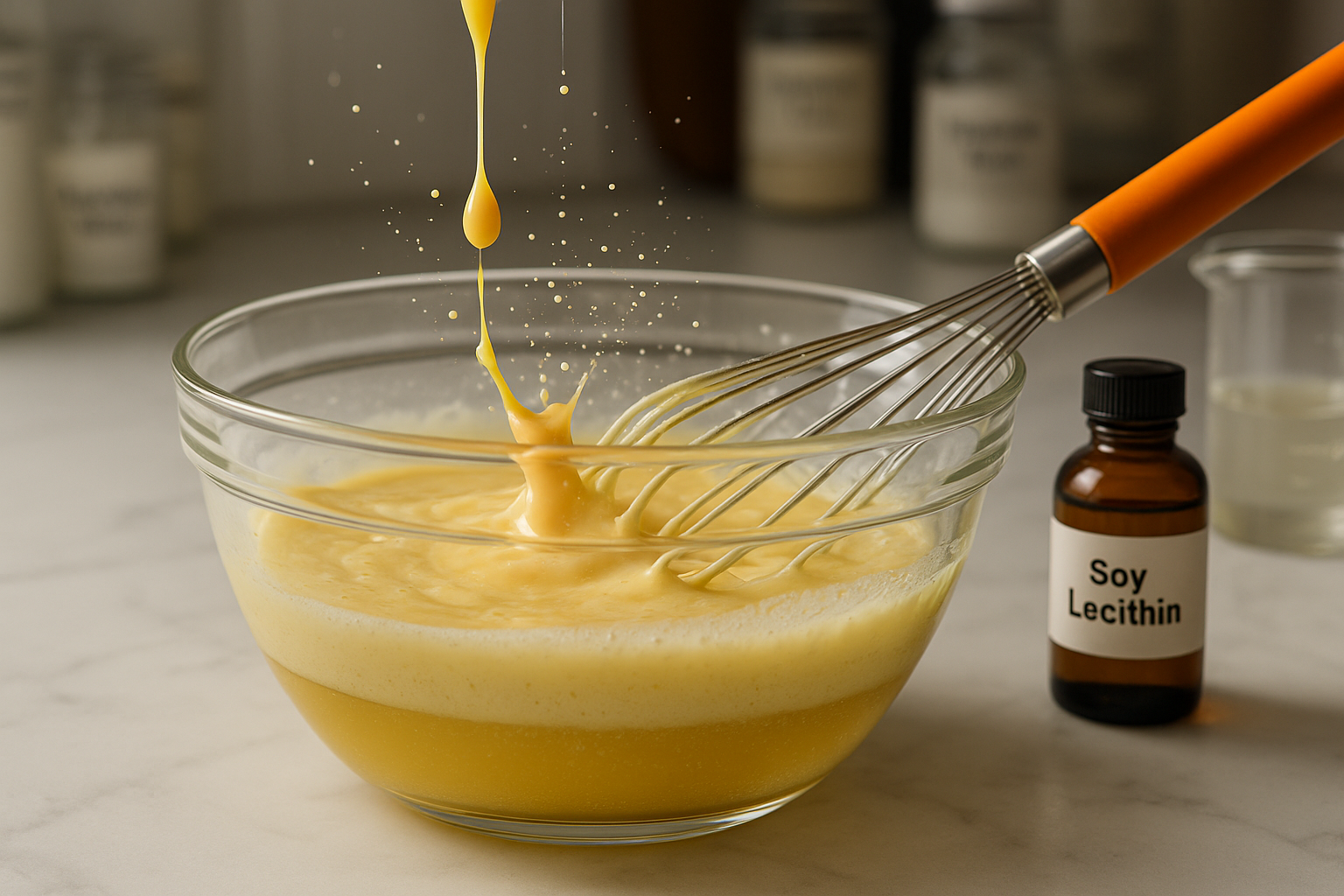
Locust Bean Gum: A Versatile and Beneficial Ingredient in the Food Industry
SUBSCRIBE TO OUR BLOG
Promotions, new products, and recipes.
In the ever-evolving world of food science and innovation, various natural ingredients are harnessed to enhance the taste, texture, and overall quality of our favorite culinary delights. One such ingredient that has been gaining popularity in recent years is locust bean gum. Also known as carob bean gum or carob gum, this plant-based additive has found its way into numerous food products and recipes, offering a multitude of benefits and unique applications for cooks and chefs alike.
What is Locust Bean Gum?
Locust bean gum is a natural thickening and stabilizing agent derived from the seeds of the carob tree (Ceratonia siliqua), a species native to the Mediterranean region. The carob tree has been cultivated for centuries due to its versatile seeds, which contain a high percentage of galactomannans—a type of polysaccharide. It is these galactomannans that are extracted and refined to produce the final product: locust bean gum.
Usage in the Food Industry:
Thickening and Stabilizing Agent: One of the primary uses of locust bean gum in the food industry is its ability to thicken and stabilize various products. It is commonly employed in dairy alternatives like soy milk, almond milk, and coconut milk, providing a smooth and creamy texture to these beverages.
Gluten-Free Baking: For individuals with gluten sensitivity or celiac disease, locust bean gum serves as a valuable alternative to wheat-based thickeners. It can be used in gluten-free baking to improve texture and prevent the formation of large ice crystals in frozen goods.
Confectionery and Ice Cream: Locust bean gum finds its way into candies, gummy sweets, and ice creams, where it acts as a binding agent, providing a pleasant mouthfeel and preventing the crystallization of sugars.
Sauces and Dressings: In salad dressings and sauces, locust bean gum contributes to the desired consistency and helps prevent phase separation, ensuring a smooth and appealing appearance.
Pet Food: The food industry extends to pet food as well, where locust bean gum is used as a stabilizing and thickening agent in wet pet foods.
Locust bean gum holds significant importance in food processing due to its unique properties and versatile applications. Its role in the food industry extends beyond being a simple thickening and stabilizing agent. Let's explore the key reasons why locust bean gum is highly valued in food processing:
Texture and Mouthfeel Enhancement: One of the primary functions of locust bean gum is to improve the texture and mouthfeel of food products. It imparts a smooth and creamy consistency, making it ideal for various dairy alternatives like plant-based milk (e.g., soy milk, almond milk) and ice creams. Additionally, it enhances the overall sensory experience in products like sauces, dressings, and confectionery items.
Stabilization: Locust bean gum is an effective stabilizer in various food formulations. It helps prevent phase separation in products where ingredients tend to settle over time, ensuring a homogeneous and visually appealing appearance. For instance, it stabilizes emulsions in salad dressings and sauces, preventing oil and water from separating.

Gluten-feee baking made possible using locust bean gum.
Gluten-Free Alternative: As a gluten-free ingredient, locust bean gum is particularly valuable for those with celiac disease or gluten sensitivity. In gluten-free baking, it can be used to improve the structure and texture of baked goods, providing an excellent alternative to traditional wheat-based thickeners like wheat flour or xanthan gum.
Improved Shelf Life: The use of locust bean gum in food products can extend shelf life by inhibiting the formation of ice crystals in frozen goods. This is especially important for frozen desserts like ice cream, as it helps maintain a smoother texture and prevents the development of large ice crystals that can negatively impact the quality.
Health Considerations: Locust bean gum is a low-calorie ingredient and contains dietary fiber, making it a favorable choice for health-conscious consumers. The addition of fiber to food products can have positive effects on digestive health and may aid in weight management.
Natural and Clean Label Ingredient: As a natural polysaccharide derived from the seeds of the carob tree, locust bean gum aligns with the growing demand for clean label and natural ingredients. Consumers are increasingly seeking food products with recognizable and fewer synthetic additives, and locust bean gum fits this criterion.
Allergen-Free Option: Being free from common allergens, such as wheat, dairy, eggs, and nuts, locust bean gum provides an allergen-free option for food manufacturers to cater to consumers with various dietary restrictions.
Synergistic Effect with Other Hydrocolloids: Locust bean gum can work synergistically with other hydrocolloids, such as xanthan gum or guar gum, to achieve specific textural properties and stability in food products. This allows for customization and optimization of formulations based on the desired end-product attributes.
In summary, locust bean gum plays a crucial role in food processing due to its ability to enhance texture, stabilize formulations, extend shelf life, and cater to various dietary preferences and restrictions. Its natural origin and multiple functional benefits make it a valuable ingredient for food manufacturers seeking to produce high-quality products that meet the demands of today's discerning consumers.T
Benefits of Locust Bean Gum:
Natural and Sustainable: As a plant-derived ingredient, locust bean gum offers a natural and eco-friendly alternative to synthetic thickeners and stabilizers.
Allergen-Free: Being gluten-free and devoid of common allergens, it is safe for consumption by those with dietary restrictions.
Low-Calorie Content: Locust bean gum is relatively low in calories, making it suitable for health-conscious consumers.
High in Fiber: It contains dietary fiber, which can contribute to digestive health when consumed in appropriate quantities.
Production of Locust Bean Gum:
The process of making locust bean gum involves several steps:
Harvesting and Seed Extraction: The carob pods are harvested, and the seeds are extracted.
Milling: The seeds are milled to create a fine powder.
Extraction: The powder is mixed with water to extract the galactomannans, which form a gel-like substance.
Purification and Drying: The gel is purified and then dried to form the final locust bean gum powder.
Use in Home Cooking:
For home cooks and chefs looking to experiment with locust bean gum, it is essential to start with small quantities, as a little goes a long way. Here are some applications:
Thickening Soups and Sauces: Add a small amount of locust bean gum to soups or sauces to achieve a thicker and more luscious texture.
Smoothies and Shakes: When making smoothies or shakes, locust bean gum can be used to create a creamier and more consistent blend.
Gluten-Free Baking: In gluten-free baking, use locust bean gum as a substitute for xanthan gum or other thickeners to improve the texture of baked goods.
Unique and Little-Known Uses:
Cosmetics: Locust bean gum can be found in some cosmetic products like lotions and creams, where it acts as a stabilizer and thickening agent.
Textile Printing: In the textile industry, locust bean gum is utilized for printing fabrics due to its viscosity and ease of application.
In conclusion, locust bean gum is a valuable and versatile ingredient in the food industry. Its natural origins, allergen-free properties, and multiple uses make it an appealing choice for food manufacturers, home cooks, and chefs alike. As consumers continue to seek healthier and more sustainable options, locust bean gum is expected to play an increasingly significant role in shaping the future of food innovation.
Have you used locust bean gum? Please share with us in the comments section below!


|
About the Author Ed is the founder of Cape Crystal Brands, editor of the Beginner’s Guide to Hydrocolloids, and a passionate advocate for making food science accessible to all. Discover premium ingredients, expert resources, and free formulation tools at capecrystalbrands.com/tools. — Ed |
Enjoyed this post? Subscribe to The Crystal Scoop
Food-science tips, ingredient know-how, and recipes. No spam—unsubscribe anytime.
- Choosing a selection results in a full page refresh.



